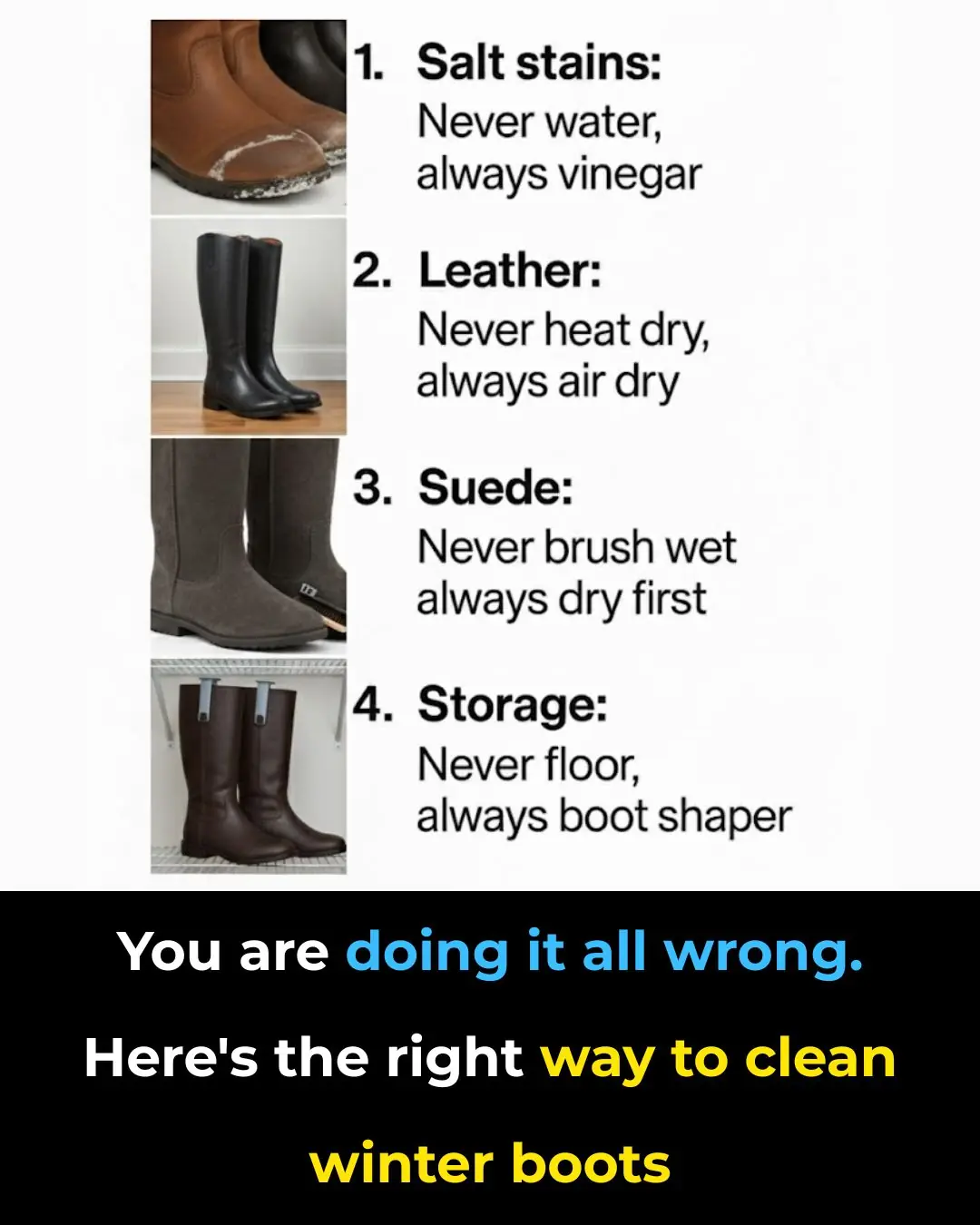
You’re Storing Your Winter Coats All Wrong — Here’s How to Do It Right
Winter coats are some of the most valuable pieces in our wardrobes. They keep us warm, elevate our style, and often represent a significant investment. Yet, when the cold season ends, many people make common storage mistakes that can lead to creasing, fading, or even long-term damage.
Storing your coats properly isn’t complicated — but it does require understanding what each material needs. Whether you own a wool peacoat, a down parka, or a classic leather jacket, following the right care steps will keep your outerwear looking sharp for years.
1. Understand the Needs of Each Fabric
Every coat material has unique requirements:
-
Wool attracts moths and needs air circulation.
-
Down loses its insulating power when compressed.
-
Leather cracks if exposed to heat or moisture.
For wool, use cedar blocks or lavender sachets to keep moths away and store coats on padded hangers with room to breathe. For down coats, skip vacuum-sealed bags and hang them loosely to maintain their fluff. Leather coats should stay in a cool, dry place away from direct sunlight, and it’s best to condition them before long-term storage.
2. Give Wool Coats Breathing Room
Wool coats need air circulation to stay fresh and mold-free. Avoid packing them tightly in your closet — overcrowding can cause wrinkles and odors.
Hang each coat on a wide, padded hanger, and use breathable fabric garment bags instead of plastic ones. Keep the humidity around 50% and ensure the area stays cool and dry.
3. Keep Down Coats Fluffy and Warm
Down coats require gentle storage to preserve their loft. Compressing them flattens the feathers and reduces insulation.
Store down coats on wide hangers or in a large, breathable bag, making sure they’re completely dry before putting them away. If closet space is limited, fold them loosely and place them in a cotton storage bin — never stack anything heavy on top.
4. Protect Leather from Heat and Humidity
Leather is sensitive to environmental changes. Too much heat dries it out; too much moisture leads to mildew.
Before storing, apply a leather conditioner to maintain suppleness. Use padded hangers for support and cover the coat with a cotton garment bag to allow airflow. Add silica gel packets or a small dehumidifier if your storage area tends to be humid.
5. Choose the Right Garment Bags
Skip plastic bags — they trap moisture and can lead to mold. Instead, use cotton or canvas garment bags that protect from dust while letting air pass through.
Always clean your coat before storing it, as stains can set over time. Add cedar blocks or lavender sachets to keep insects and musty smells away.
6. Flat Storage for Limited Space
If you’re short on hanging space, store coats flat in breathable bins. Lay them gently without pressing down, and avoid piling other items on top. This method works especially well for down coats or heavy parkas that don’t fit easily on hangers.
7. Keep Leather in a Stable Environment
Leather performs best in consistent conditions — ideally 60–70°F (15–21°C) with 40–50% humidity. Temperature or humidity swings can cause cracking or fading.
Use silica gel packets to absorb moisture and keep your storage space well-ventilated. Regularly check your coat for any early signs of mildew or dryness.
8. Zip and Button Everything
It may seem trivial, but closing all zippers, buttons, and snaps helps coats maintain their shape during storage. Open closures can stretch fabric or cause misalignment over time — especially in structured wool coats and puffed down jackets.
9. Avoid Common Storage Mistakes
Two of the biggest coat-storage blunders are:
-
Storing in damp, humid areas (like basements).
-
Using wire or thin hangers that distort shoulders.
Always store clean, dry coats in a cool, ventilated space. Use padded hangers for heavier coats and check periodically for any signs of pests or fabric wear.
10. Smart Storage Hacks That Actually Work
Some viral tricks really do help. For example, pool noodles make excellent shoulder shapers — just cut and place them over hangers to prevent creasing. You can also add activated charcoal packets to absorb moisture and odors naturally.
11. Long-Term and Seasonal Storage Solutions
If you have multiple heavy coats or limited closet space, consider a dedicated garment rack or storage unit. A climate-controlled storage unit is ideal for delicate fabrics like leather or wool blends, as it maintains steady temperature and humidity.
Label bins and bags clearly so you can easily locate each coat next season — and when winter returns, your outerwear will be fresh, structured, and ready to wear.
News in the same category


Gordon Ramsay shares health update as he reveals why he "had to come clean" over cancer diagnosis

Why Bath Towels Have Lines — And What They Actually Do

Prince Harry and Meghan Markle roasted over deleted Kris Jenner birthday photos as fans speculate ‘embarrassing’ reasons why

You’re Storing Your Batteries Wrong — Here’s How to Do It Right

The Right Way to Clean and Care for Your Winter Boots

Why You Should Regularly Clear Cookies on Your Smartphone

The One Show’s Alex Jones in tears as she makes emotional announcement: ‘We are all so proud of you

Paris Fury talks being a grandma after daughter Venezuela engaged at 16

Tom Fletcher ‘excited’ to perform with son Buzz for ‘truly special’ moment on Children in Need

WENDY WILLIAMS DOES NOT HAVE FRONTOTEMPORAL DEMENTIA

‘Broke My Heart!’: Arkansas Woman Drove Hours to Confront Pastor She Was Having an Affair with, Then Shot Him Dead in Front of His Wife

‘Had Security Called on Me 13 Times’: White Fans Tried to Get Black Woman Removed from Floor Seats at Jonas Brothers Concert Then It Backfired

‘Do You Have That Same Smoke? I’m Sick Of It’: Stephen A. Smith Believes His Rebuttal To Michelle Beadle and Cari Champion Is Giving Them The ‘Attention’ They Seek

5 Early Cancer Symptoms You Must Not Overlook

Angus T. Jones, Who Played Jake Harper, Left The Show “Two And A Half Men” 9 Years Ago – This Is Him Today

I'm A Celebrity's Joel Dommett announces wife's pregnant with second child

Hollywood icon Sally Kirkland, 84, enters hospice after dementia diagnosis
News Post

Add a drop of essential oil to an onion and no matter how many mosquitoes and insects it has, they will disappear

Shower Head Clogged After Long Use? Try This Method to Clean It Easily Without Spending Money

Why You Shouldn’t Wash Rice Inside the Electric Rice Cooker: A Common Mistake Many People Don’t Know

Add This Ingredient to Your Coffee: No More Yellow Teeth or Bad Breath

Don’t Eat Tofu Right Away After Buying It: Freezing It in the Fridge Has Amazing Benefits

Don’t Rush to Store Lemons in the Fridge — Do This Instead to Keep Them Fresh All Year Without Bitterness

Too Many Ripe Tomatoes? Try These 5 Preservation Methods to Enjoy Them All Year — Without Spending on Fresh Ones

The “Miracle” Termite Prevention Methods for Wooden Furniture

Kelvin Fletcher and wife Liz share update as they reveal they're expecting 'new arrivals'

Don’t Clean a Dirty Rice Cooker with Plain Water: Use This Trick and It’ll Shine Like New in Just 5 Minutes

Gordon Ramsay shares health update as he reveals why he "had to come clean" over cancer diagnosis

KIM KARDASHIAN FAILS THE CALIFORNIA BAR EXAM

Why Bath Towels Have Lines — And What They Actually Do

Prince Harry and Meghan Markle roasted over deleted Kris Jenner birthday photos as fans speculate ‘embarrassing’ reasons why

You’re Storing Your Batteries Wrong — Here’s How to Do It Right

The Right Way to Clean and Care for Your Winter Boots

Why You Should Regularly Clear Cookies on Your Smartphone

The One Show’s Alex Jones in tears as she makes emotional announcement: ‘We are all so proud of you
